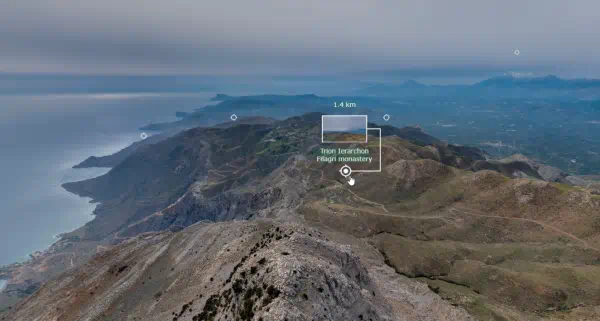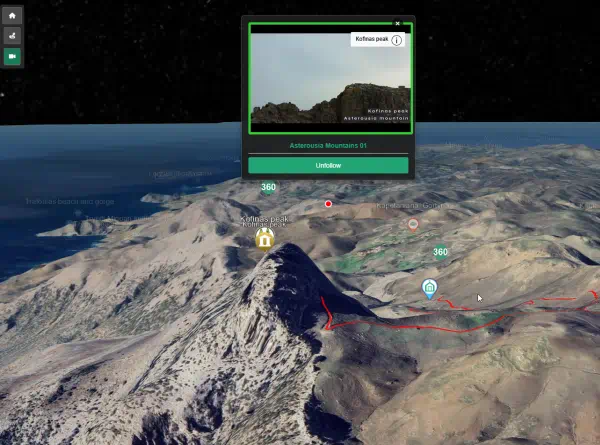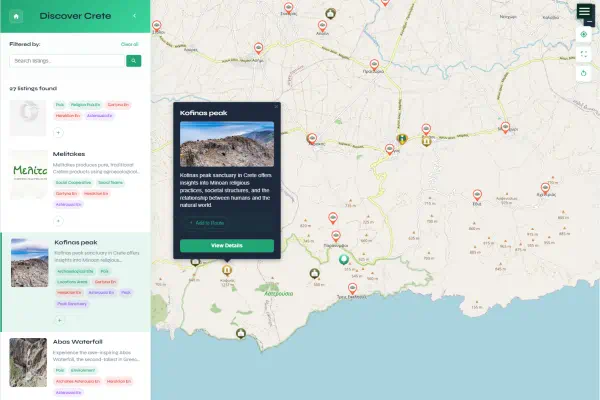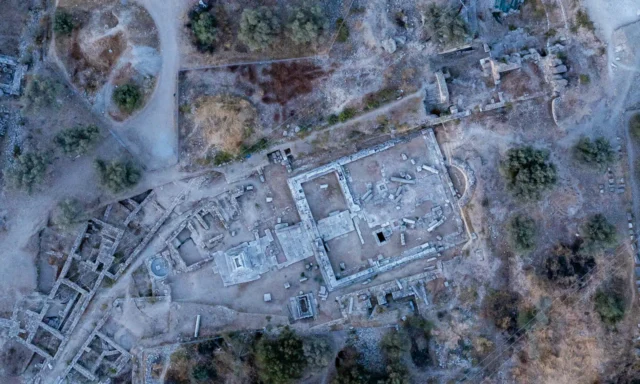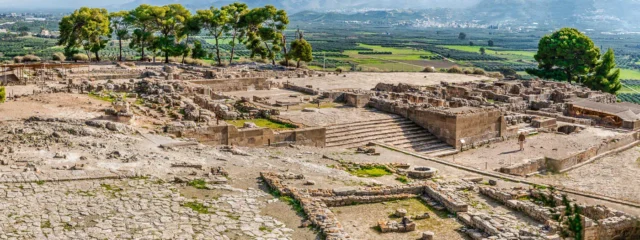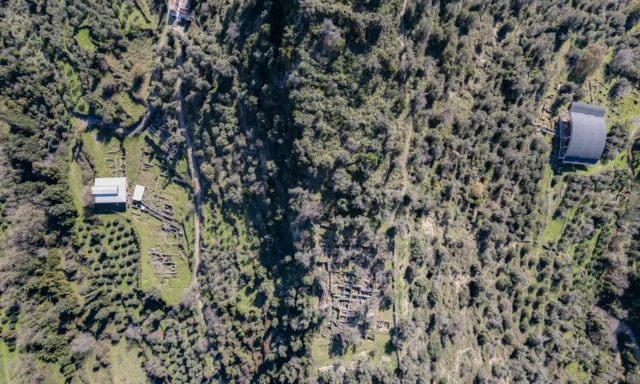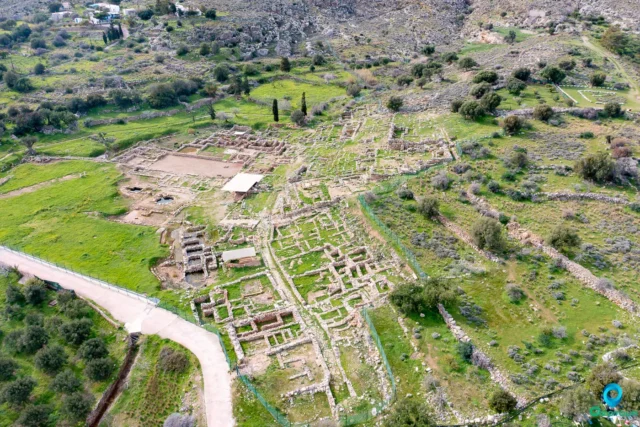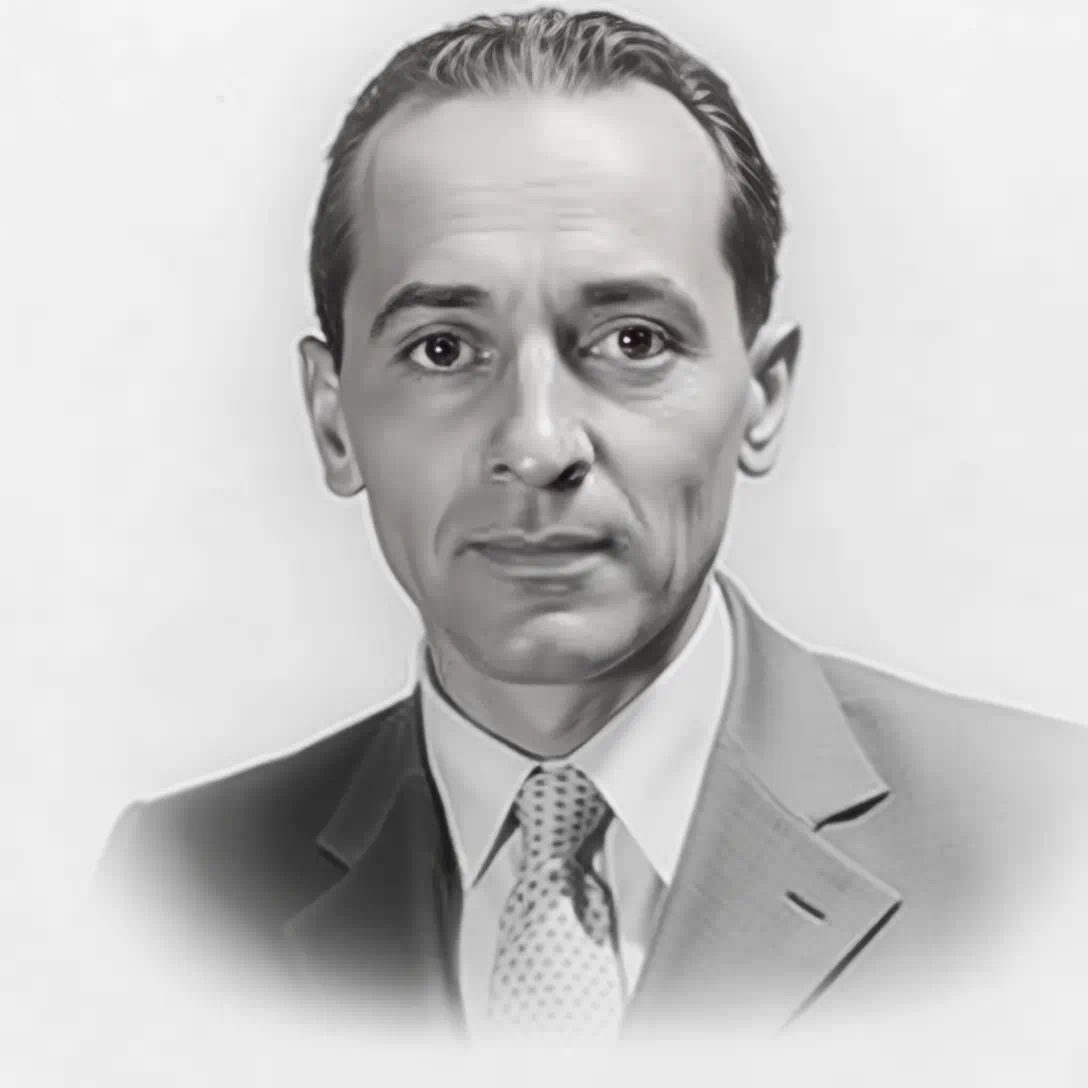Doro Levi
Biography of Doro Levi
Doro Levi (1899–1991) stands as a significant figure in the landscape of 20th-century Mediterranean archaeology, whose career spanned tumultuous historical periods and encompassed major fieldwork across Italy, Greece, Turkey, and the Near East. An Italian archaeologist of Jewish heritage, Levi navigated the complexities of Fascism, exile during World War II, and post-war reconstruction, ultimately rising to lead the prestigious Scuola Archeologica Italiana di Atene (SAIA) for three decades. His contributions were particularly profound in the study of ancient Crete, where his early work at the Geometric-Archaic site of Afratì (Arkades) and his later, extensive excavations at the Minoan palace of Phaistos fundamentally shaped scholarly understanding of the island’s past.
A Biographical Trajectory
Early Life and Education
Teodoro “Doro” Levi was born in Trieste, then part of the Austro-Hungarian Empire, into a Jewish family of the mercantile bourgeoisie. Sources present a slight discrepancy regarding his birth year, citing either June 1, 1898 or June 1, 1899. His early education took place in Trieste at the Ginnasio Dante Alighieri before his family moved to Florence, where he attended the Liceo Classico Galilei (1915-16). Displaying early Italian patriotism, Levi volunteered for service in the First World War at the age of nineteen, an act aligned with the irredentist sentiments prevalent in Trieste.
Following the war, Levi pursued higher education, initially focusing on history and antiquities related to the Greek world before developing a passion for archaeology. He obtained his doctorate (Laurea) from the University of Florence (Istituto di studi superiori di Firenze) in 1920. His postgraduate training included studies in epigraphy and Greek antiquities at the University of Rome and a study trip to London to improve his English. A crucial formative experience was his fellowship at the Italian Archaeological School at Athens (Scuola Archeologica Italiana di Atene – SAIA) from 1921 to 1925, where he was reportedly the School’s first student. During this period, he participated actively in archaeological campaigns across Greece and the Aegean, including work in Athens, Farsalo (Thessaly), Tinos, Kos, Caria (Turkey), Gavdos, Lemnos, and notably Crete. It was during this time that his fascination with the ruins of Cretan palaces took root. Contemporaneous accounts suggest he was more inclined towards focused, withdrawn study compared to some of his more socially active colleagues at the SAIA.
Early Career in Italy and Abroad (Pre-WWII)
Upon completing his fellowship, Levi embarked on a distinguished early career within the Italian archaeological administration and academia. From 1926 to 1935, he served as an Archaeological Inspector at the Soprintendenza alle antichità d’Etruria based in Florence, later becoming its Director in 1935. This role involved overseeing archaeological work and conducting excavations in Tuscany, specifically at sites like Chiusi, Volterra, Massa Marittima, and the island of Giannutri. His work during this period included the publication of an archaeological map of Vetulonia in 1931. Concurrently, he secured a teaching qualification (Libero docente) at the University of Florence around 1931-1933.
Levi’s interests extended beyond Italy and the Aegean early on. He participated in archaeological explorations in the Middle East, including missions to Mesopotamia (1930), Iraq (1933), and travels through Syria, Palestine, Transjordan, and Cyprus (1934).
In 1935, he moved to Sardinia, appointed as Professor of Archaeology and History of Greek and Roman Art at the University of Cagliari, a position he held until 1938. Simultaneously, he served as the acting director (direttore vicario) for the island’s Superintendency of Antiquities and Art (Soprintendenza alle opere di antichità e d’arte della Sardegna). His tenure in Sardinia was marked by significant contributions to the island’s archaeology. He undertook excavations at the Punic necropolis of Funtana Noa near Olbia, discovering numerous burials and rich grave goods. Among these was a particularly precious Punic glass-paste necklace from a high-status female burial (Tomb 24). Levi famously demonstrated considerable courage and integrity by strongly resisting attempts by Hitler’s deputy, Hermann Göring, to seize the necklace for his personal collection, ensuring its preservation for the National Archaeological Museum of Cagliari. His Sardinian work also included resuming excavations at the Neolithic necropolis of Anghelu Ruju (Alghero), research at Cabu Abbas and the sacred wells of Sa Testa (Olbia) and Milis (Golfo Aranci), studies at the Nuragic village of Serra Orrios (Dorgali), and analysis of Nuragic bronzes. His commitment to Sardinian archaeology left a lasting legacy. A brief study stay took him to the Dumbarton Oaks Research Library and Collection in Washington D.C. in November 1937.
The Impact of Racial Laws and Exile in the United States (1938-1945)
Levi’s flourishing career in Italy was abruptly curtailed by the implementation of Fascist Italy’s racial laws in 1938. As a Jew, he was informed by the Rector of the University of Cagliari that he had been suspended from his duties. His appeal to the Ministry, citing his WWI volunteer service medal, was rejected, forcing him to seek asylum abroad. He departed for the United States in late December 1938, arriving in New York in January 1939.
Supported initially by organizations like the Emergency Committee in Aid of Displaced Foreign Scholars (ECADFS), Levi quickly established himself within the American academic community. He secured positions at the prestigious Institute for Advanced Study (IAS) in Princeton, New Jersey, initially as a member from January to June 1939, and again from 1941 to 1945. He also held lectureships at Princeton University, Harvard University, and Radcliffe College between 1940 and 1941. In 1941, he was awarded a John Simon Guggenheim Memorial Fellowship to pursue studies of the Roman mosaics discovered at Antioch-on-the-Orontes.
This period of forced displacement, while representing a significant personal and professional rupture, paradoxically broadened Levi’s archaeological horizons beyond his primary Aegean focus. He actively participated in Princeton University’s excavations near Antioch, specifically at Daphne and Seleucia Pieria. This research culminated in his monumental two-volume work, Antioch Mosaic Pavements, published in 1947, which remains a fundamental study of Roman and Late Antique mosaics. During his US stay, he also published other significant art historical research, such as “The Allegories of the Months in Classical Art” in the Art Bulletin (1941). Furthermore, Levi contributed to the Allied war effort by collaborating with the American Commission for the Protection and Salvage of Artistic and Historic Monuments in War Areas (the Roberts Commission), utilizing his expertise to help map significant Italian monuments that should be spared during bombing campaigns. This experience in the US, engaging deeply with Roman and Late Antique art and archaeology and contributing to wartime heritage protection efforts, undoubtedly enriched his perspective and international network, influencing his approach upon his return to Europe.
Post-War Leadership and Major Excavations
Doro Levi returned to Italy in 1945, following the end of the war. He was promptly reintegrated into the academic system, being reinstated as Full Professor at the University of Cagliari on October 20, 1945, a position he officially held until 1973. Immediately upon his return, he also took on roles within the reconstructing Italian state, serving as an official in the Divisione Generale delle Antichità e Belle Arti (Ministry of Education’s General Directorate for Antiquities and Fine Arts) from 1945 to 1947, advising on cultural relations with foreign countries. He also acted as an advisor to the American Committee for Restoration of Italian Monuments. A brief stay in New York in 1946 as a guest of the Metropolitan Museum’s director signaled his continued international connections.
A pivotal moment came in 1947 when Levi was appointed Director of the Scuola Archeologica Italiana di Atene (SAIA), the institution where his own archaeological journey had begun decades earlier. He held this influential position for thirty years, until 1977. Under his leadership, the SAIA, which had seen its activities disrupted by the war, was revitalized; he formally reopened its courses in 1950. As Director, Levi spearheaded the SAIA’s major archaeological missions, bringing his extensive experience and broad interests to bear. While his work encompassed various sites, his primary focus returned emphatically to Crete and the Minoan civilization. He directed renewed, large-scale Italian excavations at Gortyna and, most significantly, initiated a new, long-term campaign at the Minoan palace of Phaistos starting in 1950. His expertise in Minoan pottery became particularly renowned. Beyond Crete, Levi also directed SAIA excavations at Iasos, a Carian site on the Anatolian coast (1960–1972), and organized excavations at Caesarea Maritima in Israel in the late 1950s. His directorship marked a long and productive era for Italian archaeology in the Aegean and Eastern Mediterranean, consolidating the SAIA’s position as a leading foreign archaeological school.
Scholarly Contributions, Recognition, and Later Life
Throughout his long career, Doro Levi was a prolific scholar. His major publications include the aforementioned Antioch Mosaic Pavements (1947), summaries of the SAIA’s work such as The Italian Excavations in Crete and the Earliest European Civilization (1963) and The Recent Excavations at Phaistos (1964), and his magnum opus on Phaistos, the multi-volume Festos e la Civiltà Minoica, which began publication in 1976. His early work on the pottery from Afratì, published in the SAIA’s Annuario, proved particularly influential for the study of Early Hellenic Crete.
Levi’s scholarly interests were remarkably broad, encompassing the entire Graeco-Roman world from the earliest Minoan civilization through to Late Antiquity, with a particular inclination towards mythology and the history of religion. His wide-ranging expertise and significant contributions earned him numerous accolades and honors. He was elected a member of prestigious institutions including the Accademia Nazionale dei Lincei (Italy’s national academy), the Pontifical Archaeological Institute, the German Archaeological Institute (Berlin), the Academy of Athens, and the New York Academy of Sciences. He served as Honorary Vice President of the Archaeological Society of Athens and received the Prize for Archaeology from the Accademia dei Lincei in 1963.
Even in his later years, Levi remained actively engaged in research, continuing to compile data on the Minoans from his office at the SAIA in Athens, where he resided within the historical heart of the city. His career trajectory demonstrates not only profound scholarly dedication but also remarkable resilience in the face of the profound political and social upheavals of the 20th century. He successfully navigated the transition from the early days of Italian archaeological missions, influenced by figures like Halbherr, to the established institutional framework of the major foreign schools, ultimately leading one himself for an extended period. Doro Levi died in Rome on July 3, 1991, at the age of 93.
The Afratì (Arkades) Excavations of 1924
Project Context: The Italian Archaeological Mission and Early Investigations
The site of Afratì, located on a prominent hill in south-central Crete and traditionally identified with the ancient city of Arkades, had already attracted the attention of Italian archaeologists prior to Doro Levi’s involvement. Federico Halbherr, a pioneering figure in Cretan archaeology, explored the area in 1894, followed by Gaetano De Sanctis in 1908, both operating under the banner of the early Italian Archaeological Mission in Crete. This established Italian interest in the region, known for its Minoan sites like nearby Phaistos and Gortyn, provided the backdrop for Levi’s work.
In 1924, Doro Levi, then a young student and fellow at the newly formalized Italian Archaeological School at Athens (SAIA), undertook excavations at Afratì under the School’s auspices. This project represented one of the SAIA’s early undertakings in the post-Minoan periods of Crete, complementing its ongoing work at major Bronze Age and Graeco-Roman centers.
Scope and Execution of the 1924 Campaign
The 1924 campaign at Afratì was driven by specific research questions prevalent in Aegean archaeology at the time. The ancient name of the site, Arkades, suggested a possible connection to Arcadian colonists, believed to be among the earliest, pre-Dorian Greek settlers of Crete. Consequently, there was considerable hope that excavations might uncover evidence illuminating the transition from the preceding Minoan civilization to the emerging Hellenic culture, bridging the so-called “Dark Ages”. The Italian mission, deeply invested in understanding Minoan Crete through its work at Phaistos and Agia Triada, had a natural scholarly interest in investigating the island’s subsequent historical phases.
Levi conducted what are described as “extensive excavations,” indicating a project of considerable scale rather than preliminary soundings. The work successfully brought to light substantial remains, primarily a settlement area and a large necropolis. While the specific field methods employed by Levi in 1924 are not detailed, his later work at Phaistos was characterized by a commitment to systematic stratigraphic excavation. It is plausible that his early work at Afratì already reflected an attention to context, although perhaps not with the same rigor or documentation standards that would develop later in his career and in the discipline as a whole. Indeed, his subsequent publication on Afratì was later noted for certain gaps regarding excavation contexts and detailed stratigraphy.
Discoveries: Unearthing the Geometric-Archaic Settlement and Necropolis
The 1924 excavations yielded significant results in two main areas:
- The Settlement: Levi identified a settlement area on the hill occupied during the Geometric and Archaic periods, broadly dating from the 8th to the 6th centuries BC. While his initial publication focused more heavily on the necropolis, the existence of a substantial contemporary habitation site was established. Subsequent research, building upon Levi’s initial work, has aimed to better define the settlement’s organization, architectural features (dwellings, possible sanctuaries, fortifications), and chronological development.
- The Necropolis: A major discovery was a vast necropolis located near the settlement. Levi’s work indicated its use spanned a long period, from the Protogeometric (PG) era (beginning around the 10th century BC) through the Geometric and Orientalizing periods, into the Archaic period (ending around the 6th century BC). This necropolis proved to be exceptionally rich, yielding numerous grave goods and providing crucial insights into the culture and society of Afratì during the Cretan Early Iron Age. It featured a complex funerary landscape, with evidence for various burial practices. Notably, the use of hypogeous tholoi (underground, circular or sub-circular built tombs) was identified, a tomb type that, while distinct, evokes echoes of Minoan funerary architecture and is attested at other contemporary central Cretan sites like Prinias. The variety of tomb forms hinted at complex or evolving social and ritual practices. The necropolis yielded an abundance of artifacts, particularly pottery and metal objects, which formed the core of Levi’s subsequent publication.
This early project at Afratì proved foundational for Levi. Undertaken while still a student, its immediate success in uncovering substantial remains from a crucial, yet poorly understood, period of Cretan history demonstrated his capabilities and likely solidified his long-term research interest in the island’s past. The findings immediately pointed towards a complex cultural reality at Afratì, one characterized by a blend of local traditions and active engagement with the wider Mediterranean world, setting the stage for further investigation and interpretation.
Findings and Significance of the Afratì Excavations
The discoveries made by Doro Levi at Afratì in 1924, primarily within the extensive necropolis but also relating to the settlement, provided a crucial window into Cretan society during the Geometric and Archaic periods (roughly 10th–6th centuries BC). These findings, further illuminated by subsequent analysis and research, hold considerable significance for understanding the island’s history after the decline of the Minoan palaces.
The Settlement
Levi established the presence of a significant settlement at Afratì dating to the Geometric-Archaic periods (8th–6th cent. BC). While detailed understanding of its layout and structures awaited later research, the identification of the habitation site itself was important. More recent analysis of ceramic deposits from the domestic quarter has challenged long-held assumptions, possibly derived from interpretations of Levi’s initial findings, that the site was largely abandoned between ca. 600 and 400 BC. This new evidence suggests a greater degree of occupational continuity through the Late Archaic and into the Classical period than previously thought. Ongoing research aims to clarify the settlement’s internal organization, the architecture of its dwellings, the location and nature of sanctuaries, and its system of fortifications.
The Necropolis: Funerary Practices and Material Culture
The necropolis explored by Levi provided the richest source of information. In use from the Protogeometric period (ca. 10th cent. BC) through the Late Orientalizing/Archaic period (ca. 6th cent. BC), possibly with some later activity, it revealed much about the burial customs and material wealth of the community.
- Funerary Architecture and Rituals: The necropolis exhibited a variety of tomb types. The presence of hypogeous tholoi is particularly noteworthy, suggesting a potential continuity or conscious revival of architectural forms with roots in the island’s Bronze Age past, adapted for the Iron Age context. Other tomb types common in central Crete during this period, such as chamber tombs, pit-caves, or shaft graves, may also have been present. This diversity likely reflects evolving burial practices or social differentiation within the community. Later analyses aim to reconstruct the specific sequence of actions (chaîne opératoire) involved in the local burial rituals and to interpret how variations in tomb construction, grave goods, and treatment of the deceased reflect social structures and identities. Parallels from sites like Karphi suggest the possibility of associated ritual activities occurring in enclosed spaces near the tombs.
- Grave Goods: The tombs yielded abundant and often high-quality grave goods, indicative of the community’s prosperity and connections:
- Pottery: Afratì proved to be a major center for Cretan ceramic production, especially during the Geometric and Orientalizing periods (8th–7th centuries BC). The finds included large cremation urns (pithoi), cups, kraters, amphorae, hydriae, and lekanai. The decoration is particularly significant, showcasing a vibrant local style that blended Geometric traditions with Near Eastern influences absorbed during the Orientalizing period. Levi highlighted the unique Cretan re-elaboration of motifs such as animal processions (goats, stags, bulls, horses), mythical creatures (griffins, sphinxes), and narrative scenes, often rendered with dynamic energy and distinct stylization. Some vases featured plastic decoration or relief elements, imitating metal prototypes. The quality and distinctiveness of this pottery challenged notions of Cretan artistic isolation during this era.
- Metalwork: Bronze objects were prominent among the finds, including defensive armor such as helmets of the “Corinthian” type (sometimes decorated) and mitrai (belly guards). Ornate bronze shield bosses, decorated with Near Eastern-inspired motifs like griffins and sphinxes, were also recovered. While not explicitly confirmed for Afratì, iron obeloi (spits), found in significant numbers in contemporary tombs at Knossos, are another potential category of metal grave good. Fragments of iron were found associated with tombs at comparable sites like Karphi.
- Other Items: Finds could also include items like clay figurines (female figures, animals, potentially kourotrophoi – child-nurturing figures), and possibly objects of faience, stone, or ivory, which served as ornaments, amulets, or perhaps gaming pieces in other Aegean contexts.
The following table summarizes the key types of findings from the Afratì necropolis, based on Levi’s 1924 excavations and subsequent analyses:
Period | Potential Tomb Types | Key Ceramic Finds | Key Metal Finds | Other Notable Finds (Potential) |
Protogeometric (PG) | Hypogeous Tholos? | Early Geometric styles, dark-on-light decoration | Bronze pins, fibulae? | – |
Geometric (G) | Hypogeous Tholos, Chamber?, Pit? | Developed Geometric pottery, linear motifs, early figurative elements | Iron objects (weapons?), Bronze items | Clay figurines? |
Early Orientalizing (EO) | Hypogeous Tholos, Chamber?, Pit? | Rich polychrome decoration, animal friezes (lions, goats), mythical creatures (griffins, sphinxes), relief pithoi | Bronze mitrai, decorated shield bosses, early helmets? | Clay figurines, Faience? |
Late Orientalizing (LO) | Hypogeous Tholos, Chamber?, Pit? | Continuation/evolution of Orientalizing styles, distinctive horse depictions, narrative scenes | Bronze helmets (Corinthian type), potentially iron obeloi | |
Archaic (AR) | As above, potential shift in practices | Later Archaic pottery styles (continuity debated) | Continuation of bronze/iron use | Terracotta plaques?, Stone objects? |
Note: This table synthesizes information from multiple sources and indicates potential finds based on parallels where direct attribution to Afratì/Levi’s finds is not specified.
Afratì’s Role in Post-Minoan Cretan History (Geometric & Archaic Periods)
Levi’s excavations at Afratì were pivotal in reshaping the understanding of Crete between the end of the Bronze Age and the rise of the Classical city-states.
- Bridging the Post-Minoan Gap: The findings provided tangible evidence for the cultural developments during the often-obscure Early Iron Age. They demonstrated not simply survival, but a dynamic process of cultural re-emergence and transformation following the collapse of the Minoan palatial system. Levi himself emphasized the mingling of Minoan or Mycenaean reminiscences with new Hellenic elements and Near Eastern influences visible in the material culture.
- Challenging Narratives of Decline: The richness and artistic quality of the finds, especially the Orientalizing pottery and bronze armor, directly countered the prevailing scholarly narrative that often depicted Geometric and Archaic Crete as an isolated, impoverished backwater living in the shadows of its glorious Minoan past. Afratì demonstrated significant local prosperity, sophisticated craftsmanship, and active participation in the broader artistic and exchange networks of the 7th century BC Mediterranean. This implied a successful socio-economic system, likely based on control of fertile agricultural land and engagement in trade.
- A Significant Regional Center: The scale of the settlement and necropolis, along with the wealth of the finds, established Afratì as a major center in south-central Crete during the Early Iron Age and Archaic periods. Its relationship with other contemporary Cretan polities like Gortyn, Phaistos, Knossos, and Prinias, as well as important sanctuaries such as Kato Syme, remains a key focus of research aimed at understanding the political and social landscape of the island during the formation of the early Greek city-states (poleis).
- Cultural Identity Formation: The material culture unearthed by Levi is crucial evidence for the construction of Cretan identity in the Iron Age. It reveals a dynamic interplay between the selective retention or revival of local traditions (evident perhaps in tomb architecture and certain artistic continuities) and the adoption and creative transformation of external influences, particularly from the Near East. This process of cultural synthesis, visible in the unique styles of Afratì’s art and artifacts, reflects a community actively negotiating its identity and place within the evolving world of the early Hellenic period.
Ultimately, the Afratì excavations, while representing an early phase of Levi’s career, provided foundational data that continues to be relevant. The ongoing re-evaluation of his findings and publication, utilizing modern analytical techniques and addressing the acknowledged gaps in the original documentation, underscores the enduring importance of his initial discoveries while also highlighting the evolution of archaeological methodology and interpretation.
Levi’s Publication on Afratì: “Arkades…” (Annuario SAIA)
A. Identification and Context
Following his 1924 excavations, Doro Levi published his findings comprehensively in the official journal of the Italian Archaeological School at Athens, the Annuario della Regia Scuola Archeologica di Atene e delle Missioni Italiane in Oriente. The extensive report appeared across volumes X-XII, covering the years 1927–1929. The publication bore the evocative title: “Arkades. Una città cretese all’alba della civiltà ellenica” (Arkades: A Cretan city at the dawn of Hellenic civilization).
The Annuario, established shortly after the SAIA’s founding in 1909 with its first volume appearing in 1914, served as the primary venue for disseminating the results of the School’s research and the work of its scholars. Publishing his Afratì findings in this prestigious journal placed Levi’s work directly within the mainstream of Italian archaeological scholarship focused on Greece and the Eastern Mediterranean, ensuring its visibility and impact within the field. The very title Levi chose explicitly framed his findings as being of fundamental importance, positioning Afratì not merely as a local Cretan site, but as a key location for understanding the very emergence of Hellenic culture on the island, a direct engagement with the major historical questions that motivated the excavation.
Content Overview and Focus on Early Hellenic Pottery
Levi’s Annuario publication provided a detailed account of the Afratì discoveries, with a particular emphasis on the rich finds from the extensive necropolis. The core of the work involved the presentation and analysis of the significant corpus of Geometric and Orientalizing pottery recovered from the tombs. This ceramic material, representing a crucial phase in the development of Cretan art after the Bronze Age, became the most influential aspect of his publication.
In his analysis, Levi meticulously documented the characteristics of this Early Hellenic pottery. He highlighted the distinctiveness of the Cretan Geometric style, noting its apparent chronological lag compared to developments on the Greek mainland, a phenomenon he attributed to a more laborious and complex formation process on the island. He demonstrated how Cretan artisans of the 7th century BC actively absorbed and creatively re-elaborated motifs originating from the Near East – a hallmark of the Orientalizing period – transforming them into unique, dynamic, and distinctly Hellenic artistic expressions. Levi provided detailed discussions of specific iconographic themes and stylistic features, such as the animated rhythm of running wild goat friezes, the transformation of stag-hunting scenes, the “flying gallop” posture of bulls, the introduction of grazing animal rows, the appearance of hybrid creatures like the bird-griffin (sometimes rendered in mixed techniques of paint and relief, imitating metal prototypes), the revival of the two-bodied animal motif known from Minoan art, and the development of characteristic local stylizations for animals like lions and horses (the latter noted for their long legs and small heads).
Through this detailed ceramic analysis, Levi argued compellingly that the material culture of Afratì revealed the intricate mingling of different civilizational strands – the inheritance from the Minoan/Mycenaean past combined with vigorous engagement with Eastern artistic traditions – leading to the formation of a new, distinctly Cretan, and ultimately Hellenic, artistic language. This early commitment to using detailed stylistic and iconographic analysis of material culture to understand complex processes of cultural interaction, artistic innovation, and the transmission of ideas foreshadowed themes that would remain central throughout his long scholarly career.
Scholarly Impact and Assessment
Levi’s publication on Arkades had a significant and lasting impact on the field of Cretan and Aegean archaeology. It was described as “particularly influential” in shaping scholarly understanding of the Cretan Early Iron Age and Archaic periods. By revealing a previously underappreciated, productive, and artistically vibrant school of Geometric and Orientalizing pottery centered at sites like Afratì, Levi provided crucial empirical evidence that challenged the prevailing narratives of Cretan isolation, stagnation, and cultural decline following the Bronze Age. His work demonstrated the vitality and connectivity of post-Minoan Crete.
However, while recognized as a monumental and innovative contribution for its time, Levi’s Arkades volume has been assessed by later scholarship as having certain limitations. Specifically, it has been noted for leaving “several scientific gaps open concerning the excavation contexts, the development of the settlement, the chronology, and the presentation of the finds,” including aspects of the graphic and photographic documentation. This assessment reflects not necessarily a failing on Levi’s part according to the standards of the 1920s, but rather the significant evolution of archaeological recording techniques, stratigraphic analysis, and publication standards over the course of the 20th century. These acknowledged gaps have spurred recent efforts to re-evaluate the Afratì material and Levi’s original excavation records, aiming to produce updated syntheses and clarify aspects of context and chronology. Nonetheless, Levi’s original publication remains a foundational text, and his interpretations emphasizing cultural continuity, local creativity, and external engagement played a crucial role in shifting scholarly perspectives on this critical period of Cretan history.
The Scuola Archeologica Italiana di Atene (SAIA)
The institutional context for much of Doro Levi’s work in the Aegean, including his early excavations at Afratì and his later directorship overseeing the Phaistos project, was the Scuola Archeologica Italiana di Atene (SAIA), the Italian Archaeological School at Athens.
History and Establishment
The SAIA was formally established by a decree of the Italian Parliament (R.D. n. 373) on May 9, 1909, creating a permanent Italian archaeological institute headquartered in Athens. Its foundation represented the institutionalization of a pre-existing Italian archaeological presence and interest, particularly in Crete, where an Italian archaeological mission had been active for the preceding decade (since ca. 1899). Key figures instrumental in the transition from mission to permanent school included the veteran archaeologist Federico Halbherr, his mentor Domenico Comparetti, and Halbherr’s pupil Luigi Pernier, who became the School’s first director. Support from influential figures within the Italian administration, such as Corrado Ricci, the Director General of Antiquities and Fine Arts at the time, was also crucial. The establishment of the SAIA placed Italy alongside other European nations that had already founded permanent archaeological institutes in Athens, signifying a commitment to long-term research and presence in Greece. This formalization ensured greater continuity, resources, and structure for Italian archaeological endeavors in the region, particularly for large-scale, multi-generational projects.
Objectives and Activities
The SAIA operates as a comprehensive academic institution with multiple objectives. Its core mission is to conduct archaeological research, including excavations and surveys, across Greece and the wider Eastern Mediterranean. A parallel and equally important function is the advanced training of young Italian scholars in the field of archaeology. The School offers highly competitive postgraduate programs, including biennial specialization courses and annual advanced (perfezionamento) courses, accessible through national examinations. This training involves a combination of lectures, seminars, practical experience through participation in fieldwork, visits to archaeological sites and museums throughout Greece, and dedicated study trips, often under the guidance of tutors. Doro Levi himself was among the first beneficiaries of this training system.
Dissemination of research is another key objective. The SAIA publishes the internationally respected Annuario della Scuola Archeologica di Atene e delle Missioni Italiane in Oriente, its primary annual journal, which has been in publication since 1914. It also publishes major excavation reports and thematic studies in its Monograph series (Monografie della Scuola Archeologica di Atene e delle Missioni Italiane in Oriente) and other series like Tripodes. Additionally, the School organizes and hosts numerous academic events, including international conferences, seminars, lectures (often held in its ‘Doro Levi Lecture Hall’), and book presentations, fostering scholarly exchange. Finally, the SAIA aims to contribute to the promotion and valorization of Greece’s rich archaeological heritage. The School maintains its scientific headquarters and library at Odos Parthenonos 14 in Athens, near the Acropolis, and has administrative offices in Rome.
Key Archaeological Missions in Greece and Crete
Reflecting its origins in the earlier Cretan mission, the island of Crete remained a central focus for the SAIA’s fieldwork throughout much of the 20th century. The School’s most significant and long-running projects were located there:
- Phaistos: Excavation of the major Minoan palace complex, initiated by Halbherr and Pernier, and significantly expanded and deepened by Doro Levi from 1950 onwards. The famous Phaistos Disk was discovered during early SAIA work at the site.
- Agia Triada: Excavation of the important Minoan town and “villa” complex near Phaistos.
- Gortyna: Extensive exploration of the major city that flourished from the Archaic period through Roman and Byzantine times, uncovering temples, public buildings, inscriptions (including the Law Code), and residential areas.
- Priniàs: Investigation of the significant Geometric and Archaic settlement and its temples with important early stone sculpture.
- Afratì (Arkades): Doro Levi’s 1924 excavations of the Geometric-Archaic settlement and necropolis.
- Kamilari: Excavation of the important Bronze Age tholos tomb cemetery near Phaistos, directed by Doro Levi in the late 1950s.
The SAIA also undertook significant work elsewhere in Greece and the Aegean:
- Lemnos: Major excavations at key sites like Poliochne (one of the earliest organized towns in Europe), Hephaistia, Chloe, and Kaminia, site of the enigmatic Lemnian stele with its non-Greek inscription.
- Other Areas: Archaeological surveys were conducted in regions like Aigialeia (Arcadia) and Thouria (Messenia). Work has also been carried out on Rhodes (e.g., at Ialysos) and in collaboration with other institutions on various projects spanning from the Bronze Age to later periods.
Like other foreign archaeological schools in Athens, the SAIA’s activities have unfolded within a complex historical backdrop, sometimes intersecting with broader political and cultural dynamics between Italy and Greece. Research indicates that during sensitive periods, such as the lead-up to and during the Italo-Hellenic conflict of WWII, the School had to navigate carefully between the political directives emanating from Italy and its ongoing scholarly mission in Greece. This underscores the fact that archaeological work abroad, while primarily academic, is often intertwined with international relations and national cultural projection.
Contextualizing Levi’s Later Career: Phaistos and Kamilari
While Doro Levi’s early work at Afratì was highly significant, the defining archaeological projects of his long career, particularly during his tenure as Director of the SAIA, were the extensive excavation campaigns at the Minoan palace of Phaistos and the nearby tholos tomb cemetery of Kamilari in southern Crete.
Overview of the Post-1950 Phaistos Excavations
Systematic Italian excavations at Phaistos had begun in 1900 under Federico Halbherr and Luigi Pernier, shortly after Crete gained autonomy. This initial phase brought much of the later palace (Neopalatial period) to light. After a hiatus, particularly impacted by the war years, Doro Levi initiated a new, large-scale cycle of excavations in 1950, shortly after assuming the directorship of the SAIA. This project became his main focus for decades, continuing into the 1970s.
Phaistos, situated dramatically on a ridge overlooking the fertile Mesara plain, is recognized as the second most important Minoan palatial center after Knossos. Levi’s renewed campaign aimed to delve deeper into the site’s history. A major focus was the systematic exploration of the earlier phases of the palace complex, the so-called Old Palace dating to the Protopalatial period (Middle Minoan IB-IIB), large parts of which lay buried beneath the ruins of the later palace partially cleared by Pernier. Levi’s work sought to understand the origins and development of Minoan palatial society by uncovering these earlier monumental structures. In addition to the palace itself, his investigations extended to the surrounding areas, exploring parts of the Minoan and later Hellenistic city at locations known as “Chalara” and “Aghia Photini”. This long-term commitment, enabled by his leadership position at the SAIA, allowed for a comprehensive re-investigation of one of the Aegean’s most important Bronze Age sites.
The Kamilari Tholos Tomb Excavations (Late 1950s)
Concurrent with his major work at Phaistos, Doro Levi also directed the SAIA’s excavation of the important Bronze Age cemetery at Kamilari, located just a few kilometers southwest of Phaistos and Agia Triada. Discovered and excavated primarily in 1959, the site consists of a complex of three tholos tombs. The largest and best-preserved, Tholos A, situated on the Grigori Koryphi hill, became the main focus.
This tomb, with an internal diameter of about 7.65 meters and walls surviving to a height of two meters, featured a well-preserved built entrance (rather than a simple trilithon) and an annexe of five rooms to the east, along with a paved northern courtyard likely used for offerings or rituals. Levi determined that Tholos A was constructed relatively late for a Mesara tholos tomb, likely in the Middle Minoan IB period (around 1900 BC), and saw continuous use for collective burials through the Protopalatial and Neopalatial periods, finally falling out of use in Late Minoan IIIA2 (around the 14th century BC). This long period of use, spanning the rise and fall of the Minoan palaces, made Kamilari a crucial site for understanding funerary practices and social dynamics in the region over centuries.
The Kamilari tombs yielded a wealth of grave goods, including around 2,500 pottery vases, seals, bronze items, and stone vases. Particularly famous are the clay models found in Tholos A, such as the “Kamilari Dancers” depicting four male figures in a circle, and another model showing a group presenting offerings at an altar, possibly representing ancestor worship or funerary rites. These finds, now housed in the Heraklion Archaeological Museum, provide invaluable insights into Minoan ritual, art, and society. Levi published preliminary results of the Kamilari excavations in 1962, with a full publication appearing much later based on his work and subsequent analysis by other scholars.
Methodological Contributions and Approach at Phaistos
A key aspect of Levi’s work at Phaistos was his reported emphasis on systematic stratigraphic excavation. His primary concern, particularly in dealing with the complex, multi-layered deposits of the palace, was to establish a more secure and refined chronology for Minoan civilization based on the careful recording of the vertical sequence and context of artifacts. This approach was crucial for disentangling the different phases of construction, destruction, and rebuilding, especially in the Old Palace area. It aimed to address the problem of artifacts from potentially different periods being found in close proximity, seeking clarity on depositional processes and relative dating. This methodological focus on stratigraphy, aimed at chronological precision, arguably represented an evolution or at least a more rigorous application compared to some earlier excavation practices that might have prioritized architectural exposure. It also provided the empirical foundation for some of his potentially challenging interpretations.
Major Discoveries and Interpretations (Phaistos)
Levi’s decades of work at Phaistos yielded substantial results that significantly advanced the understanding of Minoan Crete:
- The Old Palace: His excavations uncovered impressive and extensive sections of the first, or Old Palace, revealing its architectural sophistication and scale. This fundamentally shifted the focus of Minoan palatial studies, which had often been dominated by the Neopalatial period as exemplified by Knossos, providing crucial insights into the earlier phase of state formation and monumental architecture in Minoan Crete.
- Protopalatial Material Culture: The Old Palace levels yielded vast quantities of high-quality Middle Minoan pottery, most notably the exquisite Kamares ware, characterized by its fine fabric, sophisticated shapes (like eggshell cups), and vibrant polychrome decoration on a dark ground. The detailed study of this ceramic material, recovered from well-defined stratigraphic contexts, was essential for refining the chronology of the Protopalatial period.
- Context of the Phaistos Disk: Although the unique, hieroglyph-stamped Phaistos Disk was discovered much earlier by Pernier’s team in 1908, Levi’s subsequent excavations in and around the findspot (Room 101 in the North-Eastern Complex) helped to clarify its archaeological context. The associated pottery and a Linear A tablet fragment (PH 54) found nearby pointed towards a destruction level dating to a mature stage of Middle Minoan IIIA or possibly Middle Minoan IIIB. This contextual information, resulting from Levi’s more stratigraphically-focused work, strengthened the case for the Disk’s authenticity as a genuine Minoan artifact from the Protopalatial/Neopalatial transition, despite its enduring enigma and uniqueness.
- Urban Development: Investigations in the areas surrounding the palace, such as Chalara and Aghia Photini, shed light on the extent and nature of the Minoan town and its continuation into later periods, providing insights into non-palatial life and urban organization. Ongoing work by the Phaistos Project continues to build on this foundation, particularly focusing on the Hellenistic city.
Levi’s interpretations of the Phaistos evidence were not always aligned with the prevailing orthodoxy, particularly the framework established by Sir Arthur Evans at Knossos. His findings, especially regarding the complexity and chronology of the Protopalatial period, sometimes led him to propose alternative views on Minoan development. This willingness to challenge established paradigms based on his meticulous excavation data has been noted in later historiographical studies. This suggests Levi was not merely an excavator uncovering data, but an active participant in the major theoretical debates surrounding Minoan civilization, contributing to the critical re-evaluation of the field that gained momentum in the latter half of the 20th century. His career thus demonstrates a consistent intellectual engagement with Crete, evolving from his early exposure and work at Afratì to the massive, multi-decade undertakings at Phaistos and Kamilari, which became cornerstones of his archaeological legacy.
Continuing the Legacy: Doro Levi’s Archaeologist Children
It was mentioned that two of Doro Levi’s children followed him into the field of archaeology, continuing his dedication to the study of the ancient world. However, based on a thorough review of the available information, there are no details provided to confirm the identities, careers, or areas of specialization of any children of Doro Levi who pursued archaeology.
While some sources mention family or children in passing, or discuss children in archaeological contexts generally, none provide the specific biographical details requested regarding Levi’s offspring and their potential archaeological careers.
Therefore, this section must acknowledge a significant data gap based solely on the available evidence. While the information may exist in other biographical sources or family records, it cannot be substantiated here.
Had information been available, one might speculate that children following in Doro Levi’s footsteps could have specialized in various areas reflecting his own broad interests – Aegean prehistory, Minoan civilization, Greek or Roman archaeology, Near Eastern connections, or art history. Alternatively, they might have pursued related archaeological specializations that gained prominence later in the 20th or early 21st century, such as environmental archaeology, archaeological science, digital archaeology, osteoarchaeology, conservation, or museum studies. Potential career paths could range from academic positions involving teaching and research, to fieldwork direction, museum curation, or roles in cultural resource management and heritage preservation.
The lack of readily available information regarding this aspect of Levi’s legacy suggests it might be less prominent in standard biographical accounts or requires more specialized research. It remains an unsubstantiated point based on the provided evidence.
Conclusion
Doro Levi’s career represents a remarkable journey through the turbulent history and evolving discipline of 20th-century archaeology. From his early training and fieldwork as a student of the nascent Italian Archaeological School at Athens to his three-decade leadership of that same institution, Levi consistently operated at the forefront of Mediterranean archaeological research. His life story is one of intellectual dedication intertwined with profound resilience, navigating the rise of Fascism, the trauma of anti-Semitic persecution and exile, and the challenges of post-war reconstruction, all while maintaining an exceptionally high level of scholarly productivity and institutional responsibility.
His contributions to the understanding of ancient Crete are particularly profound and enduring. The early excavations at Afratì (Arkades) in 1924, though conducted under the standards of the time, provided foundational evidence for the vitality and complexity of Cretan society during the crucial Geometric and Archaic periods. The rich material culture unearthed, especially the distinctive pottery, challenged prevailing narratives of isolation and decline, revealing a dynamic interplay of local tradition and external engagement. His publication on Afratì in the Annuario SAIA, despite later critiques regarding contextual detail, remains a landmark study that significantly shaped the field’s understanding of the island’s transition into the Hellenic world.
Levi’s later, long-term commitment to the excavation of the Minoan palace at Phaistos and the nearby Kamilari tholos tomb cemetery cemented his legacy as a major figure in Aegean Bronze Age studies. His systematic, stratigraphically-informed approach, particularly focused on the previously under-explored Old Palace phases at Phaistos, fundamentally advanced knowledge of Minoan palatial origins and development. The wealth of Protopalatial material recovered under his direction, including vast amounts of Kamares ware, provided crucial data for refining Minoan chronology and understanding the sophistication of this early period. His work at Kamilari shed light on long-term funerary practices in the Mesara region, yielding important artifacts like the famous clay models. His willingness to challenge established interpretations based on his findings further underscores his significant intellectual contribution.
Beyond his specific fieldwork achievements in Crete, Sardinia, Turkey, and Antioch, Levi’s impact was amplified through his long tenure as Director of the SAIA. He guided the institution through a critical post-war period, fostering research and training a new generation of Italian archaeologists. His own career path mirrored the institutional maturation of Italian archaeology abroad.
While information regarding the archaeological careers of his children could not be confirmed, Doro Levi’s overall legacy is undeniable. He was a pivotal figure who bridged different eras of archaeological practice, contributed foundational data to multiple fields, authored landmark publications, and provided decades of institutional leadership. His work continues to be engaged with, re-evaluated, and built upon by contemporary researchers, attesting to the enduring significance of his contributions to our understanding of the ancient Mediterranean world.

